Investing in Gemstones
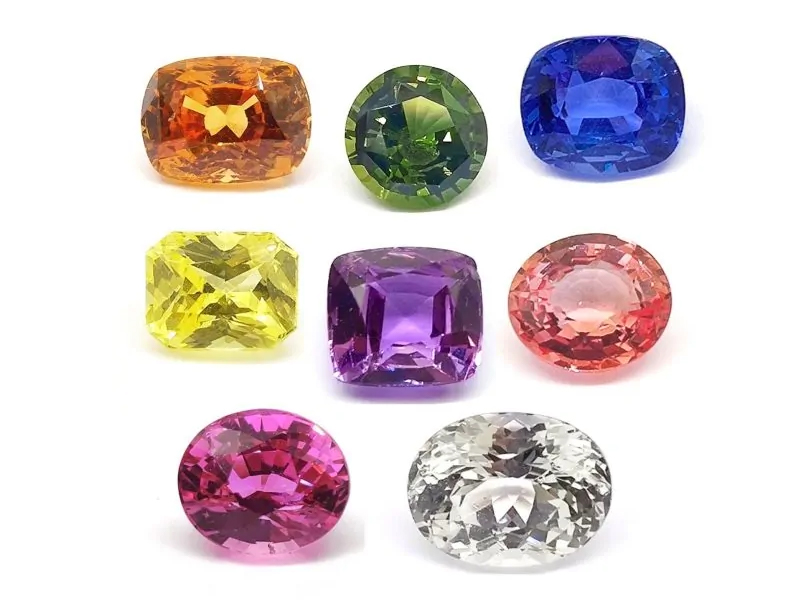
Why Invest in Colored Gems; How to Top Your Investment!
Gemstones are some of the earth’s most exquisite natural treasures that takes millions of years to form. Gemstones have constantly and will always be a desired commodity. A reason why the world demand for fine gemstones far exceeds the supply is because they rare, precious, durable and incredibly beautiful that promises wealth, fortune ownership and a notional gain as well. Even during tough economic times, when the stock market is declining and currency is losing value, the prices of gems continue to rise over time and tend to be a reliable store of value. There are always people willing to purchase gems and today they are purchased to secure private capitals from the devaluation of money itself. Therefore, gemstones are a smart move for you if you have the money to invest. Investors see them as an investment tool which represents a real portfolio diversification and a good return on investment is foreseen.
There are hundreds of kinds of gemstones, but not every gem is an investment stone. The most popular gemstones for investors include the ‘precious’ gemstones. Diamonds, Sapphires, Rubies and Emeralds are the most precious gems. However, other gems like the Alexandrite, Red Spinal, Tsavorite, Tanzanite and other particularly rare varieties can also be considered an excellent investment. Although Diamonds are the most popular gemstone for investors, colored gemstones pack a more powerful financial punch. Colored gems offer an attractive investing opportunity for many and can increase their value in time, even more than Diamonds.
Each gemstone is unique in terms of color tone, shape, size and internal features. Fine gems are distinguished by vivid, intense color, outstanding clarity, and excellent cut, including excellent grades in all 4c’s (Color, Clarity, Carat and Cut). Buy the best gemstone you can afford, always keeping in mind that this is money not spent, but rather invested.
When people hear the word precious stones, people think it is hard to invest in it. It may seem like gemstones are only something for those with deep pockets, but the truth is that anyone can invest in gemstones. With time, patience and knowledge, your investment gems can change your financial situation for the better and they can be handed down from generation to generation without any cost. In the past decade, we have also seen an increase in the number of people around the world including high-end celebrities vouching for the healing properties of gemstones. Perhaps another advantage is that the gemstones are small and easy to move.
What one needs to know?
• A fair knowledge of gemstones is a big advantage.
• Unlike gold or platinum, gemstones are not appraised based on weight alone. Gemstones are often priced based on its origin, clarity, cut, carat, color and rarity.
• Gem certifications from leading gemological testing labs can ensure in a big way that one is getting one’s money’s worth.
• If you’re making a gemstone investment for profit, choose a gemstone of top grade or unique value. In a general code of gemstone investments, the heavier the stone, the better the price it will fetch.
• Low-cost commercial grade stones are essentially worthless as they suffer from mediocre color or clarity, and are typically poorly cut, lacking brilliance and fire.
7 Essential Rules for Investing in Gemstones in Sri Lanka
In a world of volatile stock markets and ephemeral digital currencies, discerning investors are increasingly turning to assets that are tangible, timeless, and treasured. For centuries, precious gems have been more than just objects of adornment; they have been a store of wealth, a symbol of power, and a portable legacy. The practice of investing in gemstones is a sophisticated strategy for diversifying a portfolio and owning a piece of the Earth’s rarest beauty. Here in Sri Lanka, the legendary “Ratna Dweepa” (Island of Gems), we are uniquely positioned at the heart of this ancient trade. This definitive guide is designed for the astute Sri Lankan investor, providing the essential rules and insider knowledge needed to navigate this rewarding market and build a portfolio of lasting value.
Table of Contents
- Why Consider Investing in Gemstones? The Modern Case for Hard Assets
- A Hedge Against Economic Volatility
- Portability, Privacy, and Global Value
- The “Joy” Dividend: The Emotional Return
- The Cardinal Rules: Key Factors That Drive Value When Investing in Gemstones
- Rule #1: Rarity – The Cornerstone of All Value
- Rule #2: The 4Cs of Quality – Color, Clarity, Cut, and Carat
- Rule #3: Provenance – The Power of a Gem’s Origin
- Rule #4: Treatment – The Critical Importance of Transparency
- The Investment-Grade Portfolio: Which Gems to Consider When Investing in Gemstones
- The “Big Three”: The Safest Bets for Gemstone Investing
- The Connoisseur’s Choice: High-Potential Alternative Gemstones for Investing
- Navigating the Market: A Practical Guide to Investing in Gemstones in Sri Lanka
- Rule #5: Certification – Your Non-Negotiable Proof
- Rule #6: The Trusted Expert – Your Most Valuable Asset
- Common Pitfalls to Avoid When Investing in Gemstones
- Rule #7: Patience and Perspective – The Long-Term View
- Frequently Asked Questions (FAQs) About Investing in Gemstones
- Conclusion: Building a Legacy of Beauty and Value
1. Why Consider Investing in Gemstones? The Modern Case for Hard Assets
Before diving into the “how,” it’s crucial to understand the “why.” Why should a modern investor look beyond traditional stocks and real estate to something as ancient as a gemstone?
A Hedge Against Economic Volatility
Unlike paper assets, which can lose value overnight due to market fluctuations or inflation, high-quality gemstones are tangible assets with intrinsic value. Their prices are not directly correlated with the stock market, making them an excellent tool for diversification and a powerful hedge against economic uncertainty. In times of inflation, the value of hard assets like rare gems tends to rise, preserving wealth in a way that currency cannot.
Portability, Privacy, and Global Value
One of the most unique advantages of investing in gemstones is the ability to hold a significant amount of wealth in a small, portable item. A top-tier sapphire or ruby can be worth more than a luxury apartment, yet it fits in the palm of your hand. This makes it a discreet and highly mobile form of wealth. Moreover, gemstone transactions are private, and their ownership is not tracked in a public digital ledger, offering a level of confidentiality that is increasingly rare in the modern financial world.
The “Joy” Dividend: The Emotional Return
This is a benefit no stock certificate can offer. A rare gemstone is a work of art by Mother Nature. You can have it set in a piece of jewelry to be worn and admired, providing a daily return on investment in the form of pure joy and pride. It is an investment that can be passed down through generations, becoming a treasured family heirloom rich with personal history.
2. The Cardinal Rules: Key Factors That Drive Value When Investing in Gemstones
Not all gemstones are created equal. The difference between a pretty stone and a true investment-grade gem is vast. Success in this market hinges on understanding the key drivers of value.
Rule #1: Rarity – The Cornerstone of All Value
This is the single most important principle in gemstone investing. Value is directly and inextricably linked to rarity. A gem can be beautiful, but if it is common, it will never be a sound investment. Rarity can manifest in several ways:
- Rarity of Type: A Padparadscha Sapphire is infinitely rarer than an Amethyst.
- Rarity of Quality: A flawless, vivid “Pigeon’s Blood” Ruby is exponentially rarer than a commercial-grade ruby of the same size.
- Rarity of Size: A 10-carat Ceylon Sapphire of fine quality is astronomically rarer than ten 1-carat stones of the same quality.
Rule #2: The 4Cs of Quality – Color, Clarity, Cut, and Carat
This framework, while famous for diamonds, is the bedrock of colored gemstone evaluation as well.
- Color: For colored gems, this is the king of the 4Cs. It is judged on three components: Hue (the primary color), Tone (its lightness or darkness), and Saturation (its intensity). A top-grade gem will have a pure, vivid, and evenly distributed color.
- Clarity: Unlike diamonds, colored gems are expected to have some inclusions. The standard is “eye-clean,” meaning no flaws are visible to the naked eye. Some inclusions, like the “silk” in a Kashmir Sapphire, can even increase a gem’s value.
- Cut: A masterful cut is what unlocks a gem’s life and brilliance. It is not just about shape; it is about the precise angles and facets that maximize the stone’s color and sparkle. A poor cut can make a fine stone look lifeless, destroying its value.
- Carat Weight: This is simply the weight of the stone. As mentioned, because larger crystals are much rarer, the price-per-carat increases dramatically as the size goes up.
Rule #3: Provenance – The Power of a Gem’s Origin
In the world of high-end gems, where a stone was mined—its provenance—can add a significant premium to its price. This is due to the historical reputation and unique characteristics of gems from certain locations. For example:
- Ceylon (Sri Lankan) Sapphires: Considered the benchmark for blue sapphires due to their unique luminosity.
- Burmese Rubies: The source of the legendary “Pigeon’s Blood” red.
- Colombian Emeralds: The standard for the finest, richest green.
For investors in Sri Lanka, this gives us a unique advantage and a point of pride, as our own Ceylon Sapphires are a globally recognized “brand” of quality.
Rule #4: Treatment – The Critical Importance of Transparency
Many gemstones undergo treatments to enhance their appearance. A crucial aspect of investing in gemstones is understanding these treatments. Standard heat treatment for sapphires and rubies is a stable, permanent, and universally accepted practice. However, more invasive treatments like fracture-filling with glass or dyeing are unacceptable for investment-grade stones. Full disclosure of any and all treatments is mandatory. An unheated gem of fine quality is the rarest of the rare and will always command the highest prices. For a comprehensive overview, the Gemological Institute of America (GIA) is an excellent resource.
3. The Investment-Grade Portfolio: Which Gems to Consider When Investing in Gemstones
While thousands of mineral varieties exist, only a select few possess the rarity, durability, and historical demand to be considered true investment-grade assets.
The “Big Three”: The Safest Bets for Gemstone Investing
For conservative investors, the “Big Three” have a centuries-long track record of holding and appreciating in value.
- Sapphires: The undisputed king here is the Ceylon Blue Sapphire. Its consistent demand and historical significance make it a blue-chip investment. The ultra-rare Padparadscha Sapphire, also from Sri Lanka, is at the pinnacle of the market, offering incredible potential for appreciation.
- Rubies: The most valuable of the corundum family. Top-quality, unheated Burmese Rubies, especially those with the “Pigeon’s Blood” color, are among the most expensive gems per carat in the world.
- Emeralds: The finest emeralds, particularly from Colombia’s Muzo mine, with their deep green color and minimal inclusions, are perennial favorites at high-end auctions.
The Connoisseur’s Choice: High-Potential Alternative Gemstones for Investing
For investors with a higher risk tolerance and a keen eye, several other gems offer significant growth potential.
- Spinel: For centuries mistaken for ruby (the famous “Black Prince’s Ruby” in the British Crown Jewels is actually a spinel), this gem is now appreciated for its own incredible brilliance and range of colors. Sri Lanka is a prime source for investment-quality spinel.
- Alexandrite: The “emerald by day, ruby by night” gem is famous for its dramatic color change. Its extreme rarity, especially in sizes over one carat, ensures its high value.
- Paraiba Tourmaline: Discovered in the 1980s, this tourmaline’s electric, neon-blue color, caused by copper, has made it a modern legend. Its price has skyrocketed, making it one of the best-performing gem investments of the last few decades.
4. Navigating the Market: A Practical Guide to Investing in Gemstones in Sri Lanka
Knowledge is your best defense and most powerful tool. Here is how to approach the practical side of acquiring investment gems.
Rule #5: Certification – Your Non-Negotiable Proof
Never, ever purchase a significant gemstone without a certificate from a major, independent, and internationally respected gemological laboratory. This is your only guarantee of the gem’s identity, quality, origin, and treatments. Top-tier labs include:
- GIA (Gemological Institute of America)
- Gübelin Gem Lab
- SSEF (Swiss Gemmological Institute)
A local certificate may be useful, but for a global asset, an international certificate is the gold standard.
Rule #6: The Trusted Expert – Your Most Valuable Asset
The gemstone market is complex and nuanced. For a serious approach to investing in gemstones, you need a trusted partner—a reputable gemologist or dealer who has years of experience, a strong reputation, and your best interests at heart. They can help you source the right stones, understand market pricing, and avoid costly mistakes. This relationship is paramount. At Prestige Gems Store, we pride ourselves on being that trusted partner, offering fully certified, investment-grade gemstones from Sri Lanka and around the world with complete transparency and expert guidance.
5. Common Pitfalls to Avoid When Investing in Gemstones
Knowing what not to do is as important as knowing what to do.
- Buying Without a Certificate: This is the cardinal sin of gemstone investing.
- Prioritizing Size Over Quality: A 2-carat gem of exceptional quality is a far better investment than a 5-carat stone of mediocre quality.
- Chasing “Too Good to Be True” Deals: The market for fine gems is very efficient. There are no secret, unbelievable bargains. A price that is far below market value is a massive red flag.
- Ignoring Liquidity: Gemstones are a long-term investment. They cannot be sold as quickly as stocks. Understand that this is a patient game.
Rule #7: Patience and Perspective – The Long-Term View
Successful investing in gemstones is not a get-rich-quick scheme. It is the slow, steady accumulation of rare and beautiful assets that will stand the test of time. Think in terms of years and decades, not weeks and months.
6. Frequently Asked Questions (FAQs) About Investing in Gemstones
1. Is investing in gemstones a good idea for beginners? It can be, but it requires significant education and guidance. Beginners should start by reading extensively and building a relationship with a trusted gem expert before making any major purchases. Starting with smaller, high-quality stones like Spinel can be a good entry point.
2. What is the minimum amount needed for seriously investing in gemstones? While you can buy beautiful gems for any price, a true investment-grade portfolio typically starts in the range of several thousand US dollars for a single fine stone. The “sweet spot” for liquidity and quality often begins around the $5,000 – $10,000 mark per stone.
3. How do I sell my gemstones when I want to liquidate my investment? There are several avenues. You can sell back through a trusted dealer (who may take it on consignment), through a specialized auction house (for very high-end pieces), or to another private collector. Having an international certificate makes the process infinitely easier.
4. Are unheated gemstones a better choice when investing in gemstones? Yes. An unheated gemstone of fine quality is significantly rarer than a treated one and will always be the top choice for an investor. It will command a higher price upfront but also has the greatest potential for appreciation.
5. Which gemstone offers the best potential return on investment? While the “Big Three” are the safest, gems like fine Spinel and Paraiba Tourmaline have shown some of the most dramatic price increases in recent history. However, the ultimate answer always comes back to quality: a top-tier example of any rare gem type will always be a strong investment.
7. Conclusion: Building a Legacy of Beauty and Value
Investing in gemstones is a unique fusion of art and finance. It is a disciplined pursuit that rewards knowledge, patience, and a passion for the rare and beautiful. For us in Sri Lanka, it is an opportunity to connect with our national heritage on a profound level—to become custodians of the very treasures that have made our island famous for millennia. By following these essential rules, you can move beyond being a mere buyer and become a true connoisseur, building a portfolio that is not only financially sound but also a source of immense pride and a tangible legacy for generations to come.




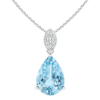




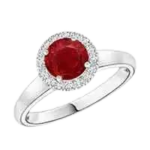 Ladies Rings
Ladies Rings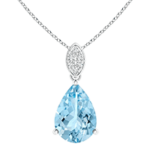 Pendants
Pendants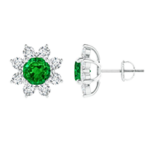 Earrings
Earrings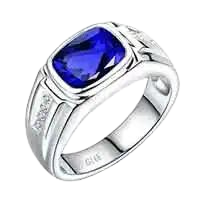 Gent’s rings
Gent’s rings